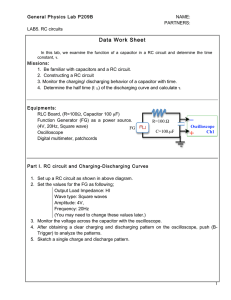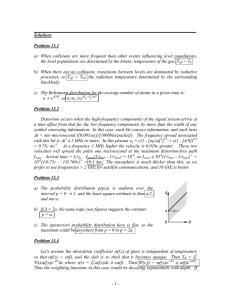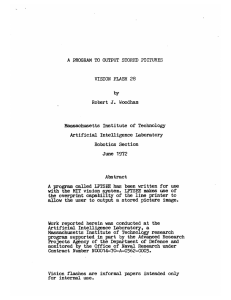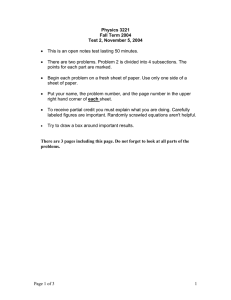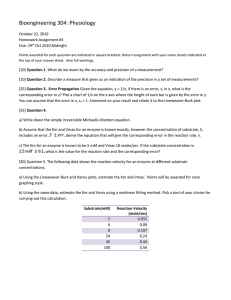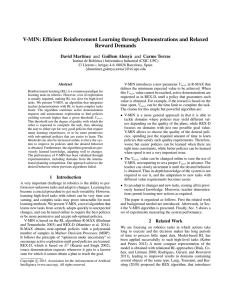A Nand Schmitt-Trigger Oscillator
advertisement
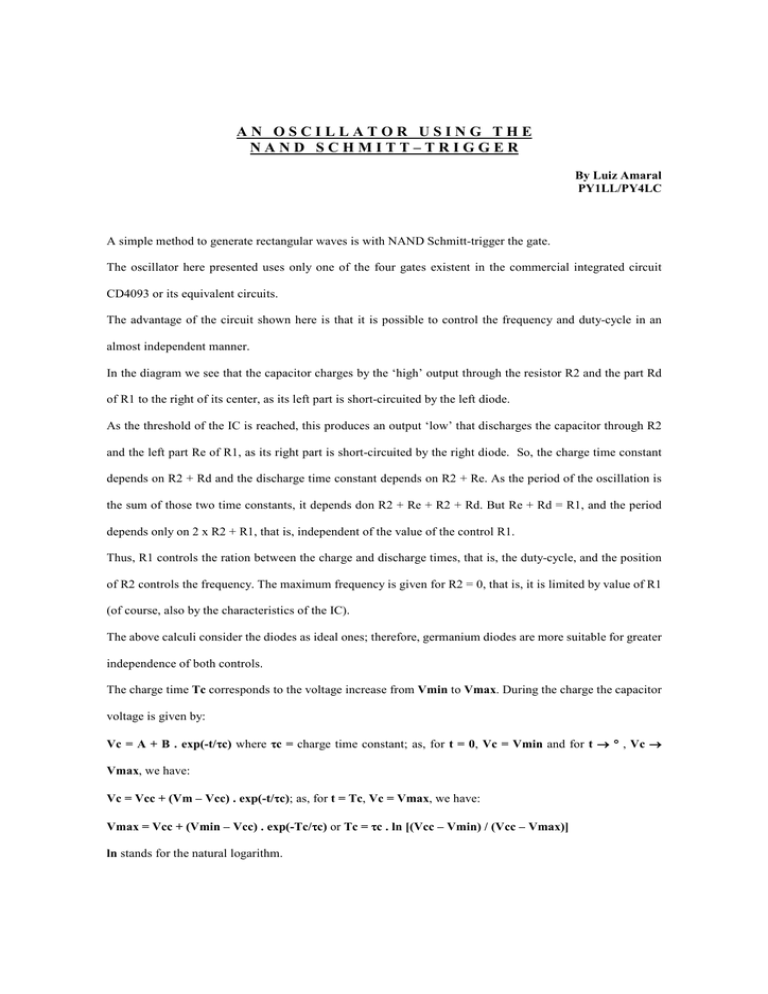
AN OSCILLATOR USING THE NAND SCHMITT–TRIGGER By Luiz Amaral PY1LL/PY4LC A simple method to generate rectangular waves is with NAND Schmitt-trigger the gate. The oscillator here presented uses only one of the four gates existent in the commercial integrated circuit CD4093 or its equivalent circuits. The advantage of the circuit shown here is that it is possible to control the frequency and duty-cycle in an almost independent manner. In the diagram we see that the capacitor charges by the ‘high’ output through the resistor R2 and the part Rd of R1 to the right of its center, as its left part is short-circuited by the left diode. As the threshold of the IC is reached, this produces an output ‘low’ that discharges the capacitor through R2 and the left part Re of R1, as its right part is short-circuited by the right diode. So, the charge time constant depends on R2 + Rd and the discharge time constant depends on R2 + Re. As the period of the oscillation is the sum of those two time constants, it depends don R2 + Re + R2 + Rd. But Re + Rd = R1, and the period depends only on 2 x R2 + R1, that is, independent of the value of the control R1. Thus, R1 controls the ration between the charge and discharge times, that is, the duty-cycle, and the position of R2 controls the frequency. The maximum frequency is given for R2 = 0, that is, it is limited by value of R1 (of course, also by the characteristics of the IC). The above calculi consider the diodes as ideal ones; therefore, germanium diodes are more suitable for greater independence of both controls. The charge time Tc corresponds to the voltage increase from Vmin to Vmax. During the charge the capacitor voltage is given by: Vc = A + B . exp(-t/ττc) where τc = charge time constant; as, for t = 0, Vc = Vmin and for t → ∞ , Vc → Vmax, we have: Vc = Vcc + (Vm – Vcc) . exp(-t/ττc); as, for t = Tc, Vc = Vmax, we have: Vmax = Vcc + (Vmin – Vcc) . exp(-Tc/ττc) or Tc = τc . ln [(Vcc – Vmin) / (Vcc – Vmax)] ln stands for the natural logarithm. The threshold ‘up’ and ‘down’ voltages Vmax and Vmin for the used IC are respectively 60% and 40% (typical) of the supply voltage Vcc (this varies with temperature and with Vcc itself). So, we can write for the charge time: Tc = 0.4 . τc (1) The discharge time Td corresponds to the decrease from Vmax to Vmin. During the discharge the capacitor voltage is given by: Vc = a + b . exp(-t/ττd), where τd = discharge time constant; as, for t = 0, Vc = Vmax, and for t → ∞, Vc → Vmin, we have: Vc = Vmax . exp(-t/ττd); as, for t = Td, Vc = Vmin, we have: Vmin = Vmax . exp(-Td/ττd) or Td = τd . ln (Vmax / Vmin). With their values, we can write for the discharge time: Td = 0.4 . τd (2) As (1) e (2) have the same constant 0.4, we have for the total period T: T = 0.4 . (ττc + τd) (3) But τc = R2 + Rd and τd = R2 + Re and so we have, with Rd + Re = R1: T = 0.4 . (2R2 = R1) or the frequency F: F = 1 / [0.4 . (2R2 + R1)] By Luiz Amaral PY1LL/PY4LC OUTPUT Re Rd The frequency is given approximately by: The symmetry is controlled by R1 The frequency is controlled by R2 By Luiz Amaral PY1LL/PY4LC
